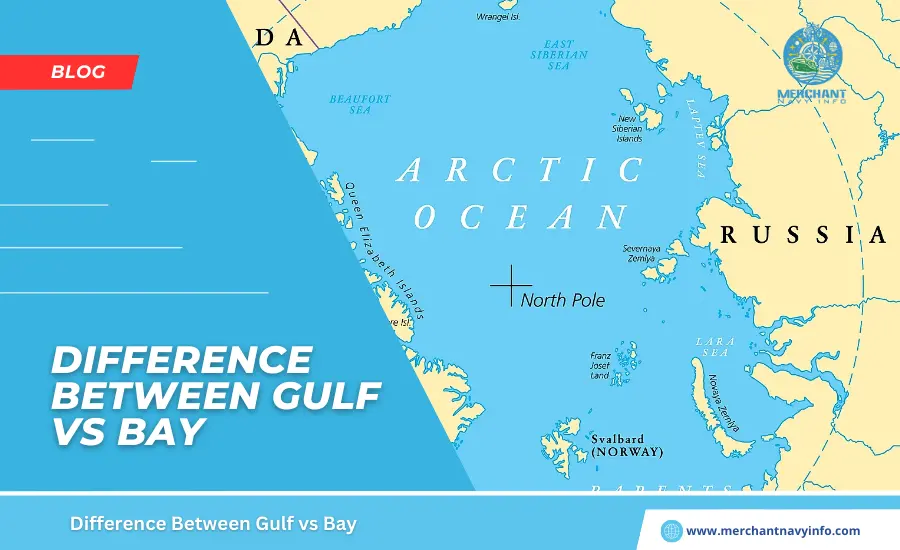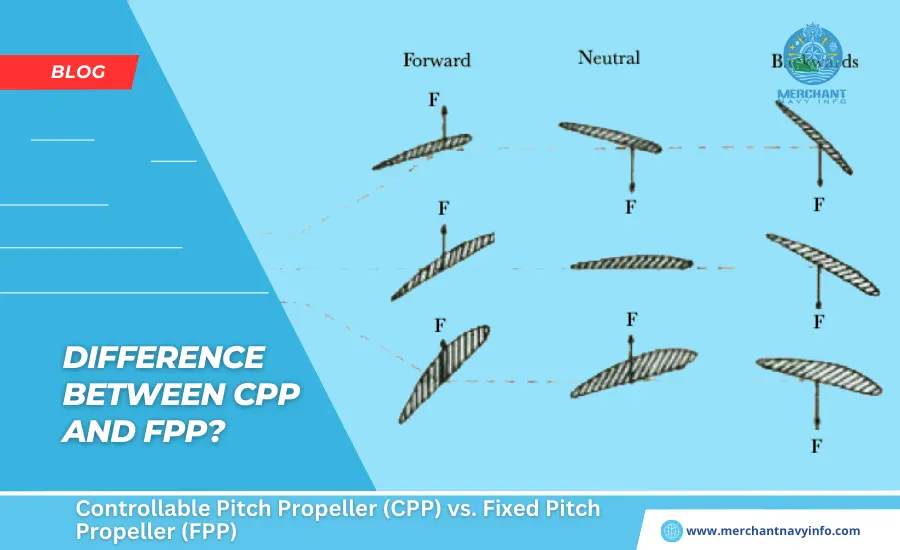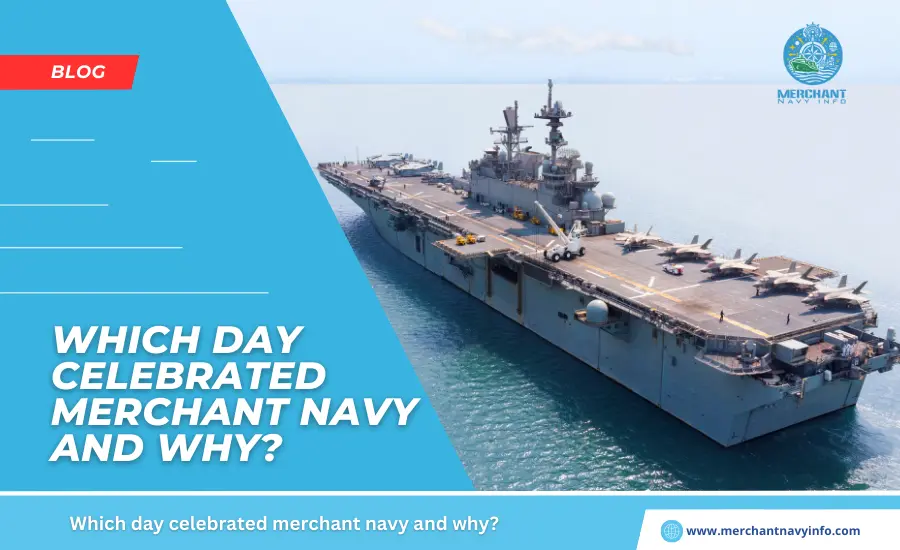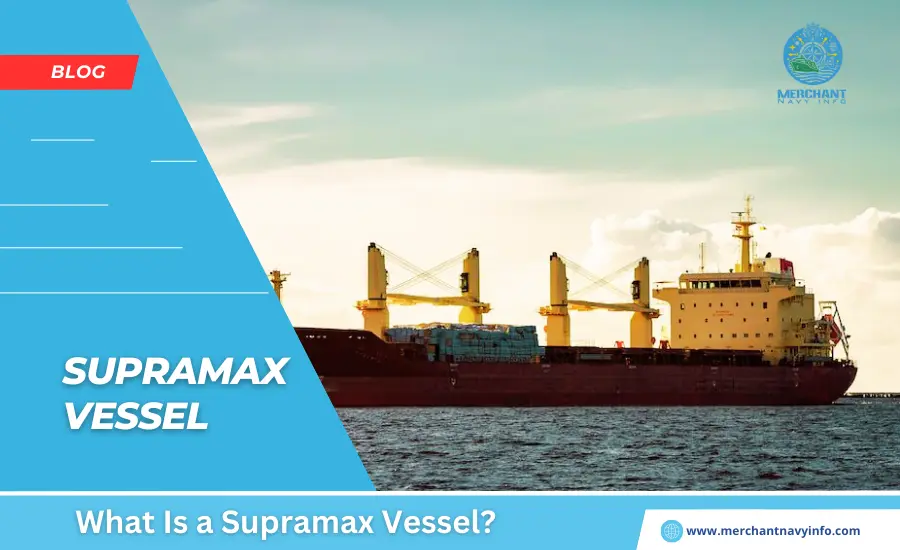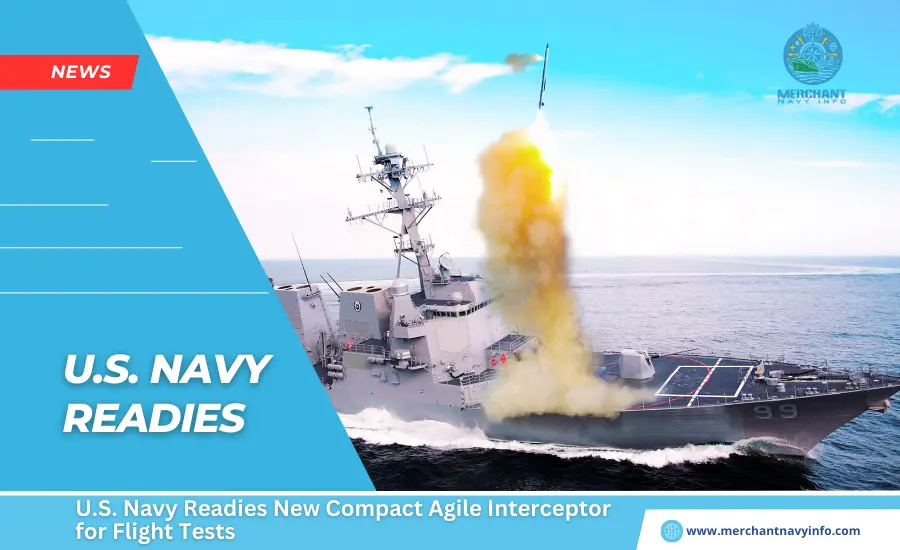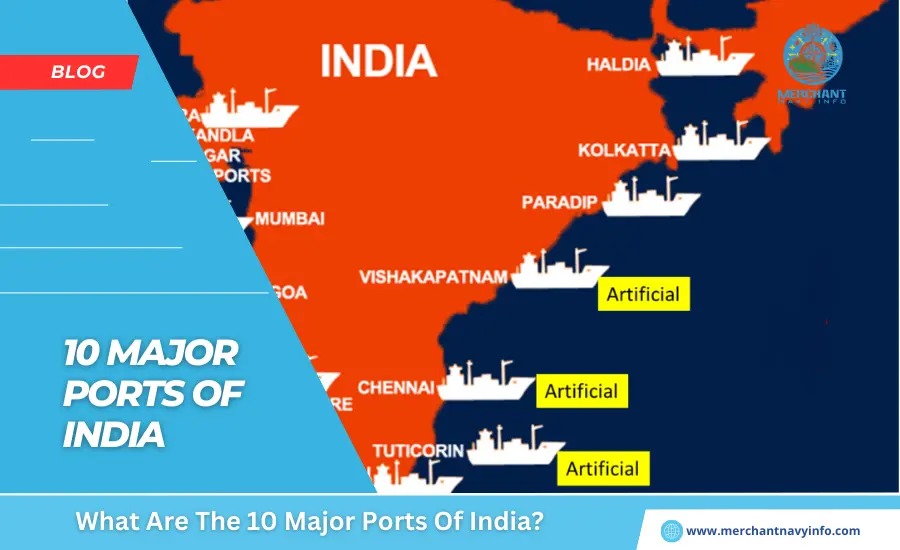
Let’s look at some of the major ports of India. Covering a majority of the Indian subcontinent. The country India is an Asian country has many prominent and intermediate ports. The central government handles the former. At the same time, the latter comes under the state government’s jurisdiction.
India has a coastline of over 7,000 kilometers and is one of the world’s most extensive Exclusive Economic Zones (EEZ). Its primary ports are 13 major harbors that are well-connected and have advanced facilities.
Most major ports in India are completely government-owned under the Ministry of Ports, Shipping, and Waterways. Private organizations may operate individual terminals and facilities in coastal states.
Many of India’s terminals are operated by firms such as DP World, APM Terminals, and PSA International. The Adani Group is the biggest private operator.
As they lie on the Indian Ocean. The ports service vessels inbound from the Middle East, Europe, also Africa to the West. The major ships from the East sail from Southeast Asia, Japan, South Korea, and Australia.
Given their vast maritime importance, Indian ports have played a major role in the nation’s growth and development. In this article, we look at the ten major ports of India (including a few private players).
The ports’ UN/LOCODE, region also province, gross cargo tonnage. In addition, gross TEU traffic is also stated.
Jawaharlal Nehru Port Trust – Nhava Sheva (JNPT)
Called the Nhava Sheva, JNPT is the biggest container port in India and one of the essential subcontinent harbors on the Western coast. The name originates from the two erstwhile villages that flourished on the shores of Thane Creek. At this place, JNPT now stands.
Opened in 1989, it processes almost 55% of container cargo passing through India. It has regularly crossed 4 million TEUs annually and aspires to reach the 10 million mark by 2021.
The primary exports through JNPT include textiles, machinery, meat, chemicals, and pharma products. Plastics, machinery, vegetable oils, aluminum, and non-ferrous metals are the imports here.
JNPT is ranked 28th among the world’s top container ports.
Port of Mundra: A major port

It is the largest private port in India, Mundra is a massive hub for containers and bulk cargo. The managed by Adani Ports and SEZ Limited (APSEZ) also began operations in 2001.
It is well connected to the main hubs in India. The Mundra-Adipur railway tracks and the 8A Extn National Highway give road and rail connectivity.
Mundra Airport is witnessing major developments to transform it into an international airport for air cargo. The port can manage 5 million TEUs and 338 million metric tons of cargo.
The port operates ten berths for dry bulk, 3 for liquid bulk, six container berths, and three mechanized import berths. Also, 2 for SPM crude oil intakes.
The port also handles three main pipelines- IOCL Panipat, and the Bathinda refinery line. Also, the National Capital Region (NCR) line. There is an on-site storehouse for agricultural goods, machinery, coal, and other industrial goods.
Port of Chennai

The port used to be called Madras is the most massive port on the Bay of Bengal coastline. Chennai port is one of the oldest ports in India. Operational since 1881. The port has been a driving force for trade and commerce in the region and is called the “Gateway of South India.” It is directly linked to more than 50 ports. This has ISPS also ISO 14001:2004 certifications. Moreover, it is ranked 86th worldwide in TEU handling. The Chennai Port Trust manages it.
The harbor covers nearly four square kilometers as an artificial seaport on a coastal breakwater. The main shipments are automobiles, motorcycles, regular industrial cargo, iron ore, marble, coal, fertilizers, petroleum products, also agricultural produce. Iron, leather, cotton, textiles, and automobiles are makor exports.
The major imports are graom, raw cotton, machinery, iron, also steel. This port deals with over 50 million tons of cargo, and expansion is underway to improve the capacity to 140 million tons. The present container handling capacity is 2 million TEUs.The dock is broken down into the Ambedkar Dock, which has 12 berths; the Satabt Jawahar Dock, which has six berths; the Bharati Dock, which has three oil and iron berths; the container terminal, which has three berths; and the single mooring berth.
Port of Kolkata – Also, Syama Prasad Mookerjee Port Trust (KoPT)

One of the main riverine ports in India, Kolkata port is located 200 kilometers inland. Moreover, it is the oldest port in operation. It is a homogenous freshwater located on the Hooghly River. The port services most of Northern also Eastern India and even neighboring nations such as Nepal, Bhutan, Bangladesh, also the Autonomous Region of Tibet. It has been operational since the early 16th century and receives a sizeable chunk of shipments to the North-Eastern states. Jute is a crucial export commodity. This along with copper, textiles, iron ores, also liquid chemicals.
The port is divided into the Kolkata Dock System (KDS) also the Haldia Dock Complex (HDC). The KDS is on the left bank and is manned by the Gasper also Saugor pilotage stations. The Kidderpore docks run many berths and three dry docks, the Netaji Subhas docks run ten berths and two dry docks, and the Budge Budge dock has six wharves for petroleum, and the basic anchorages are at Diamond Harbor, Saugor Road, and the Sandheads.
O. Chidambaranar Port (VOCP) is an awesome major port

Known as the Tuticorin, VOCP is a key seaport in India. It is located South of the mainland. It is classified as a medium artificial harbor spanning nearly eight square kilometers. Operated by the VOCP Trust, this is the 4th biggest container terminal in India and the second in the state. This port handles vessels from China, Europe, Sri Lanka, the Mediterranean, and the USA. It has a certification of ISO 9001:2008 and ISO 14001:2004 also is ISPS Compliant.
The main shipments have industrial raw materials and agricultural produce. The main imports are coal, cement, fertilizers, phosphate, petroleum also derivatives, coke, and edible oils. The major exports are general cargo, raw ore also minerals, building materials, sugar, liquid cargo, granite, and limonite.
Port of Kandla (Deendayal Port Trust)

It was founded in the 1950s and is handled by Deendayal Port Trust. Kandla is located close to Gandhidham, near Kandla Creek, on the Gulf of Kutch, and guarded by a natural harbor. It is a principal seaport in India and lies close to Karachi Port in Pakistan. It is now expanding to improve the existing facilities. One of the biggest imports in the region is petroleum and refined products. The primary source of Kandla is Essar Oil, which supplies the Vadinar Refinery. This accounts for more than 50% of the traffic through Kandla.
An additional four berths are being constructed to adjust ships with larger drafts and tonnage. A dedicated container terminal handles less traffic than other Indian ports.
Salt, textiles, grain, and oil are the major exports from this port. Petroleum, chemicals, iron, steel, and machinery are the major imports. Despite Kandla’s isolation, efforts are underway to improve the surrounding area.
Port of Mumbai– The major port of India

Known as the ole Bombay Port Trust (BPT), Mumbai harbor is a crucial port in India. This is a natural deep-water seaport controlled by the MbPT and spans 400 square kilometers. It is situated on the Arabian Sea also was opened by the British at the end of the 17th century. Its hinterland has Central, Southern, also West India. MbPT primarily handles bulk also general cargo, while the neighboring Nhava Sheva port deals in container traffic.
Port of Vishakapatnam

Visakhapatnam is the biggest harbor in Andhra Pradesh. It is ranked 3rd in cargo level and is close to the ports of Chennai and Kolkata. At the Vishakapatnam Trust (VPT), the port presently operates 24 berths. It mainly services the hinterlands of Central and South India. The primary goods are not limited to iron ore, manganese nodules, steel goods, regular cargo, coal, raw oil, also more petroleum derivatives.
The outside dock is the largest and has six berths. The smaller internal dock has 18 berths and can handle Panamax ships. The maximum anchorage draft across the harbors is 17 meters.
Port of Cochin

It experiences traffic from vessels on the Indian Ocean route. The port itself is built over two neighboring islands—Willingdon and Vallarpadam. It is controlled by the Cochin Port Trust (CPT) and has been operational since 1928. Is near other maritime facilities in Kochi, i.e. the Cochin shipyards, and Kochi Refineries SPM. Moreover, Kochi Marina, and the offshore crude carrier mooring facility.
Port of Hazira

Known as Surat Port, the Adani-controlled is a major LNG and petroleum harbor on the Western coast of India, close to Surat. It is handled and operated by Adani Hazira Port Private Limited (AHPPL). It is made to handle every type of cargo.
The port is close to the Delhi-Mumbai Industrial Corridor and the Mumbai and Nhava Sheva Ports.
What Are The 10 Major Ports in Mexico?
What Is The 10 Major Port In Dubai?
What are the 7 Major Ports in the UK?
What Are The 5 Major Ports in Algeria?
What Are The 10 Major Ports In Yemen?
10 Major Ports are there in Canada?
What are the 6 Major Ports in Israel?
What Are The 8 Major U.S. Ports on the East Coast?
What Are The 8 Major Ports In Pakistan?
What are the 5 Major Ports in Oman
What are the 10 Major Ports in Brazil?
What are the 7 Major Ports in Qatar?
What Is The 5 Major Port in Vietnam?
What Are the Five Major Ports in Japan?


